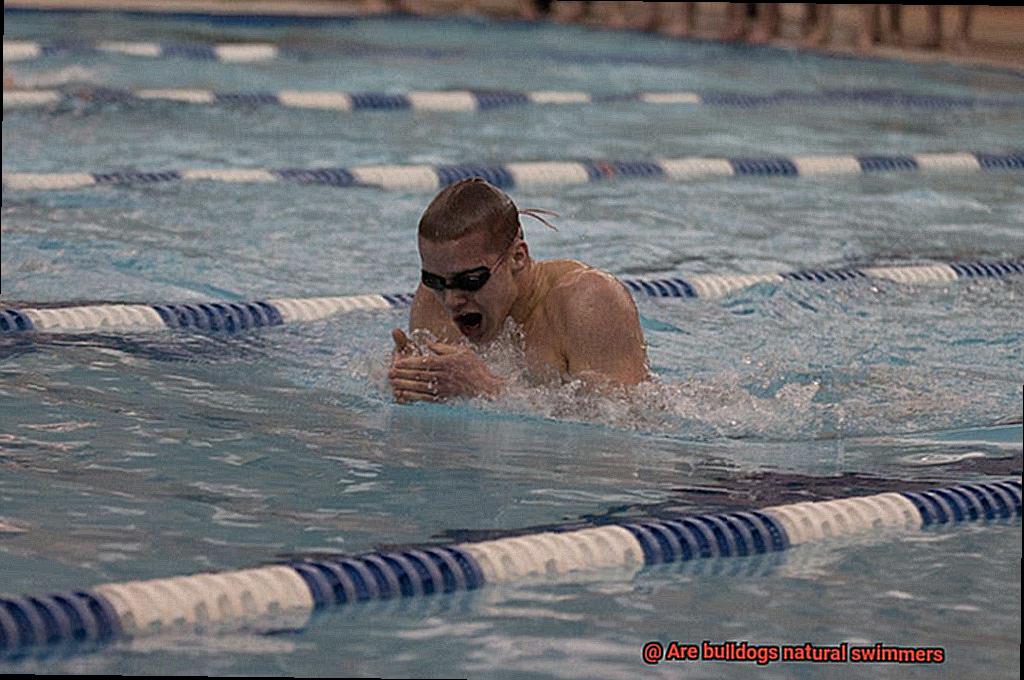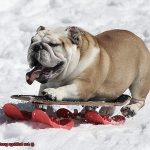Are bulldogs natural swimmers?
Imagine a bulldog, with its stocky frame and adorable squished face, gracefully gliding through the water like a seasoned swimmer. Surprising, right? In this blog post, we’re about to uncover the truth behind bulldogs and their swimming skills. Are they truly as inept in the water as they appear, or do these lovable creatures have a secret aquatic talent waiting to be unleashed? Get ready to dive deep into the world of bulldogs and discover whether they are natural-born swimmers or if it’s all just a tall tale.
We all know that Labradors and Retrievers were practically born with fins instead of paws, but what about bulldogs? At first glance, it may seem like these sturdy pups are more suited for lounging on land than paddling through water. However, looks can be deceiving. While not every bulldog is destined to be an Olympic swimmer, many of them possess surprising swimming abilities that will leave you in awe.
Just like humans, each bulldog has its own unique set of skills when it comes to swimming. Some take to the water like fish, effortlessly gliding through waves with an agility you wouldn’t expect from their stout bodies. Others may need a little extra encouragement or guidance before they feel comfortable taking the plunge. But hey, who doesn’t need a little support when trying something new?
So why do some bulldogs struggle while others excel in the water? It all comes down to their physical attributes. Bulldogs have heavy heads and compact bodies, which can make staying buoyant a bit more challenging. Their short snouts also affect their ability to regulate breathing while swimming. These factors might seem like obstacles at first glance, but with proper training and guidance, even the most hesitant bulldog can become a confident swimmer.
In the following sections, we’ll explore the factors that influence a bulldog’s swimming prowess. We’ll also share some tips and precautions to ensure that your bulldog can safely enjoy the water while having a blast. So grab your floaties, put on your swim trunks, and get ready to uncover the truth about bulldogs and their hidden aquatic talent. It’s time to make some waves.
Are bulldogs natural swimmers
Contents
- 1 Are bulldogs natural swimmers
- 2 Understanding the Anatomy of a Bulldog
- 3 The Challenges of Bulldog Swimming
- 4 Tips for Introducing Bulldogs to Water
- 5 Benefits of Professional Guidance for Bulldog Swimming
- 6 Life Jackets for Bulldogs: Safety First.
- 7 Shallow Water and Playtime: A Refreshing Experience for Bulldogs
- 8 Is it Possible to Teach an Old Dog New Tricks?
- 9 Alternatives to Deep-Water Swimming for Bulldogs
- 10 Conclusion
French Bulldogs are beloved pets known for their affectionate nature and adorable appearance. However, when it comes to swimming, these charming canines may face some challenges due to their unique physical characteristics.
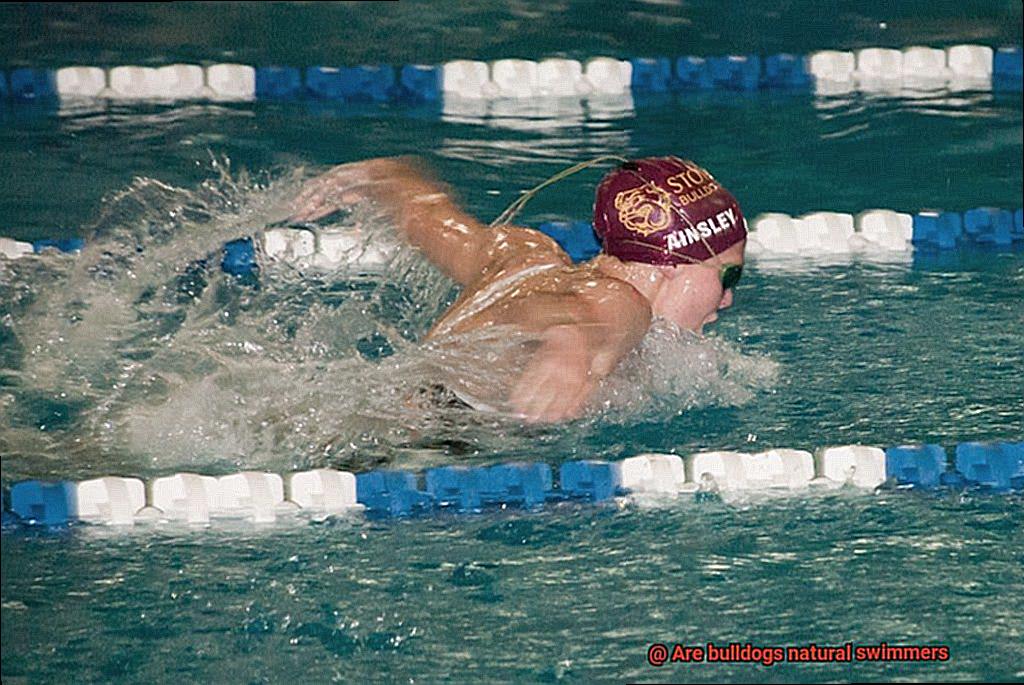
In this article, we will explore why French Bulldogs are not considered natural swimmers and how you can ensure their safety around water.
Physical Characteristics:
French Bulldogs have a heavy, muscular build with a large head and short snout, which can make swimming difficult. Their short legs and compact body structure further limit their ability to paddle efficiently in the water. Additionally, their dense coat can weigh them down when wet, making it even harder to stay buoyant.
Breathing Difficulties:
Bulldogs, including French Bulldogs, are prone to respiratory issues due to their brachycephalic features. When submerged in water, their short snouts make it challenging for them to breathe properly, increasing the risk of inhaling water or experiencing breathing difficulties. This can lead to panic and exhaustion.
Safety Measures:
To ensure your French Bulldog’s safety around water, closely supervise them at all times. If you plan on letting them swim, consider providing a life jacket specifically designed for dogs. This will help keep them afloat and reduce the risk of accidents or drowning. Start with shallow water and gradually introduce deeper areas, allowing your Frenchie to get comfortable with swimming.
Alternative Water Activities:
While swimming may not be the best option for French Bulldogs, they can still enjoy water-related activities. Setting up a shallow pool or sprinkler in your backyard allows them to cool off without the need for extensive swimming. Playing near the edge of the water, fetching toys from shallow areas, or simply wading in cool water on hot days can provide delightful experiences for your furry friend.
Understanding the Anatomy of a Bulldog
When it comes to swimming, these little cuties may face some challenges due to their unique anatomy. In this blog post, we will explore how the anatomy of a French Bulldog can affect their natural swimming abilities and provide helpful tips for introducing them to water activities.
The Stocky Build: A Strong Foundation
French Bulldogs have a stocky and compact body with a heavy bone structure. Their broad chest and muscular build give them a strong foundation, which can be advantageous in swimming. However, their short and stout legs may pose some challenges when it comes to efficient movement in the water.
The Short Muzzle: Breathing Difficulties
One key factor to consider is the French Bulldog’s short muzzle, also known as brachycephaly. While this feature gives them their signature appearance, it can affect their ability to swim comfortably. Bulldogs have a shorter nasal passage and narrower airways compared to other breeds, which can make breathing difficult during physical exertion. When swimming, this can lead to increased effort in maintaining buoyancy and breathing properly.
The Weight Distribution: Finding Balance
Additionally, French Bulldogs have a relatively large head in proportion to their body size. This can cause their front end to be heavier, making it more difficult for them to keep their balance while swimming. The weight distribution may contribute to a slightly lower center of gravity, which can make it challenging for them to stay afloat effortlessly.
The Waterlogged Coat: Added Weight
Furthermore, French Bulldogs have a dense and thick coat that can become waterlogged quickly. This added weight can make swimming more strenuous for them, especially if they are not accustomed to being in the water.
Despite these potential challenges, it is important to remember that not all French Bulldogs are non-swimmers. While they may not possess the innate ability or agility of certain water-loving breeds like Labradors or Retrievers, many French Bulldogs can learn to swim with proper training and supervision. Some French Bulldogs even enjoy being in the water and can become proficient swimmers with practice.
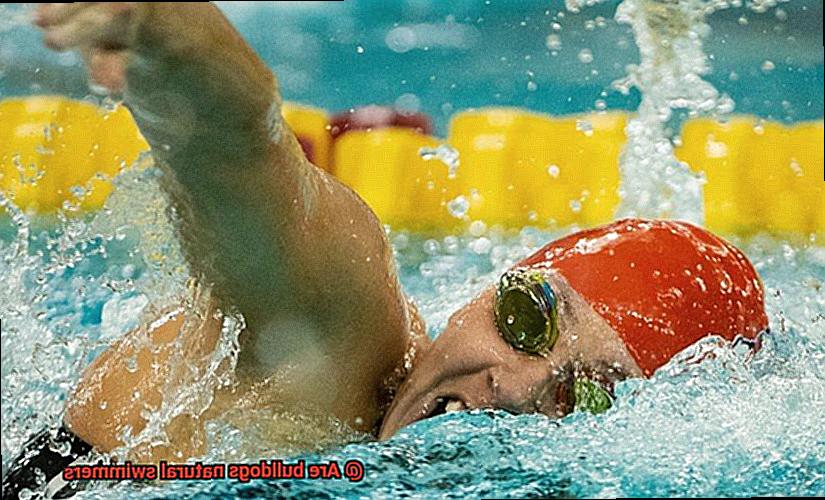
In conclusion, the anatomy of a French Bulldog can affect their natural swimming abilities. Their stocky build, short muzzle, weight distribution, and waterlogged coat may pose some challenges when it comes to swimming. However, with proper training and supervision, many French Bulldogs can overcome these obstacles and enjoy the water safely. Stay tuned for our next blog post, where we will provide guidance on how to introduce your French Bulldog to water activities and ensure their safety.
The Challenges of Bulldog Swimming
When it comes to swimming, French Bulldogs face unique challenges due to their physical characteristics. Understanding these challenges and taking necessary precautions is crucial for their safety and enjoyment in the water. So, let’s dive right in and explore the challenges of bulldog swimming.
- Buoyancy Blues: Bulldogs’ short legs, heavy bodies, and large heads make it difficult for them to stay afloat in water. Their dense muscle mass and heavy bone structure don’t work in their favor either. Bulldogs are more prone to sinking than other breeds, so extra care is needed.
- Breathing Battles: Bulldogs have a short snout and a pushed-in face, which can cause breathing difficulties when submerged in water. Keeping their noses above water becomes a challenge, and they may struggle to catch their breath.
- Endurance Enigma: Due to their physical limitations, bulldogs tire easily when swimming. Their lack of endurance makes it hard for them to stay afloat or swim long distances. So, keep swimming sessions short and sweet.
- Heatstroke Hazards: Bulldogs are more susceptible to heatstroke and exhaustion than other breeds when exposed to water for extended periods. Their short snouts make it difficult for them to regulate body temperature, increasing the risk of overheating. Always monitor them closely and provide plenty of breaks and shade.
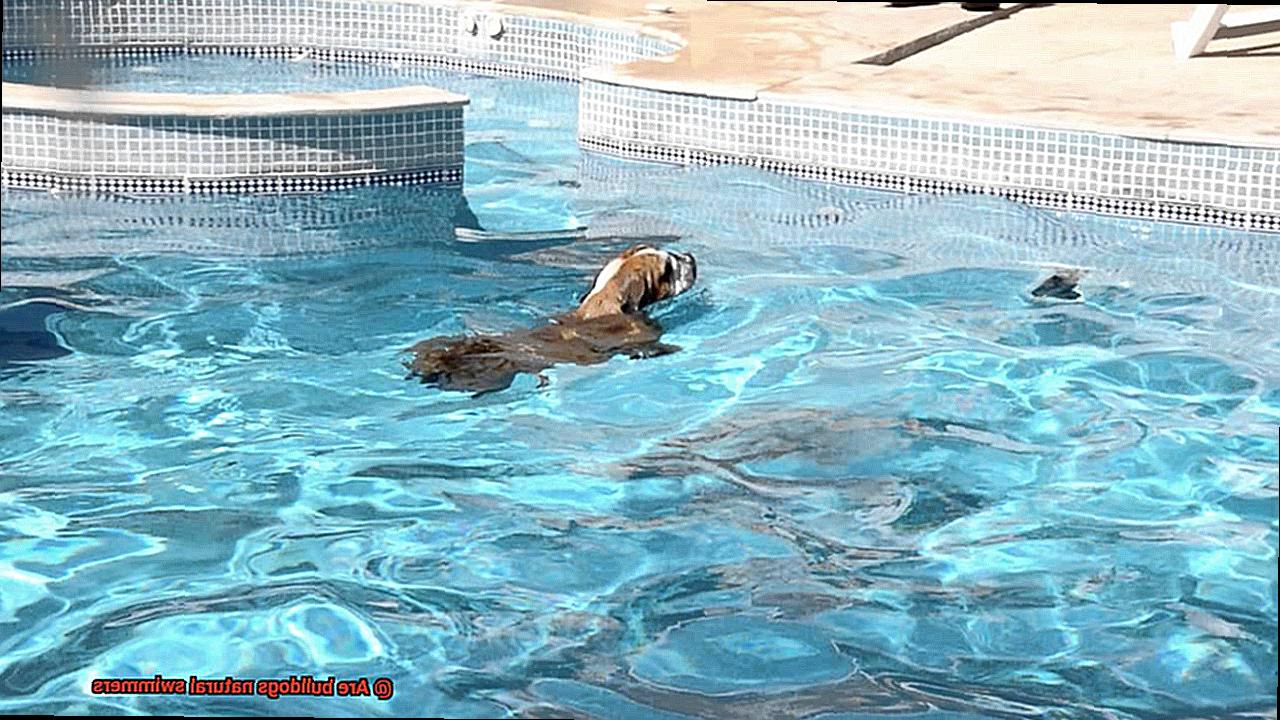
Now that we’re aware of these challenges, let’s discuss some important precautions bulldog owners should take when it comes to swimming.
Precautions for Bulldog Owners:
- Supervision is Key: Always keep a close eye on your bulldog while swimming. They may tire quickly or encounter breathing difficulties, so it’s essential to be nearby.
- Life Jacket Safety: Invest in a high-quality life jacket designed specifically for bulldogs. This will not only provide buoyancy but also give you peace of mind knowing your furry friend is safe.
- Watch for Distress Signals: Bulldogs can’t verbally express their distress, so it’s important to watch for signs of exhaustion, excessive panting, or struggling to keep their head above water. If you notice any distress signals, remove them from the water immediately.
- Know Your Bulldog: Understand that not all bulldogs are natural swimmers. Each dog is unique, and their abilities in the water may vary. Some may embrace swimming with proper supervision and safety measures, while others may prefer to stay on dry land.
Tips for Introducing Bulldogs to Water
French Bulldogs are adorable and lovable pets, but when it comes to water, they may need a little extra help. Due to their physical characteristics, bulldogs are not natural swimmers. However, with patience, positive reinforcement, and gradual introduction, your French Bulldog can learn to enjoy the water just like any other dog. In this article, we will explore some helpful tips for introducing your French Bulldog to water.
Understand Their Physical Challenges:
French Bulldogs have unique physical characteristics that make swimming more challenging for them. Their large heads, short snouts, and heavy bodies can make it difficult for them to stay afloat and breathe properly in water. This is why it’s important to be aware of their limitations and take appropriate precautions.
Start Slow and Gradual:
Begin by introducing your French Bulldog to shallow water where they can touch the ground and feel secure. A kiddie pool or a calm lake with a gentle slope can be ideal for their first water experience. Allow them to explore at their own pace and provide plenty of positive reinforcement, such as treats and praise, to create a positive association with water.
Use Positive Reinforcement Techniques:
Positive reinforcement is key when introducing your French Bulldog to water. Reward them with treats and praise for any progress they make, even if it’s just dipping their paws in the water. This will help build their confidence and make them more comfortable around water.
Never Force or Throw Them In:
Forcing or throwing your French Bulldog into the water can create fear and anxiety, making it even more challenging for them to feel comfortable in water. Instead, let them approach the water on their own terms and provide reassurance and support throughout the process.
Gradually Increase Depth and Support:
As your French Bulldog becomes more confident, gradually increase the depth of the water. You can use a flotation device or a life jacket designed specifically for dogs to provide extra support and safety. This will help build their swimming skills and give them the confidence they need to enjoy water activities.
Make It Fun and Safe:
To make water activities enjoyable for your French Bulldog, incorporate toys or games. Toss a floating toy into the water for them to retrieve or play with them using a sprinkler. Always supervise your bulldog while they are in or near water, especially if they are still learning to swim. Bulldogs may tire easily, so it’s important to keep a close eye on them and ensure their safety at all times.
Benefits of Professional Guidance for Bulldog Swimming
While Bulldogs may not be natural swimmers due to their unique body structure, professional guidance can make all the difference in ensuring their safety and enjoyment in the water. In this blog post, we will explore the benefits of seeking professional guidance for bulldog swimming and why it is essential for both your dog’s well-being and your peace of mind.
Safety First: Assessing Individual Abilities
Professional guidance allows for a thorough assessment of your bulldog’s swimming abilities. Each dog is different, and a professional can determine their comfort level, strengths, and limitations in the water. This individualized approach ensures that training techniques and exercises are tailored to your bulldog’s specific needs.
Proper Handling Techniques
Bulldogs require special handling in the water due to their short snouts and potential breathing difficulties. A professional can teach you how to support your bulldog properly, ensuring they can breathe comfortably while swimming. By learning these techniques, you minimize the risk of accidents or injuries, giving you peace of mind during water activities.
Identifying Health Issues
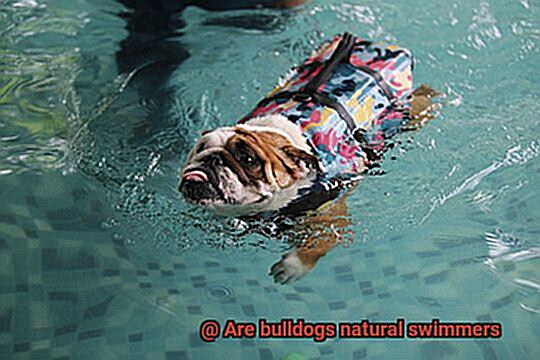
Bulldogs are prone to respiratory problems and joint issues, which can impact their swimming abilities. Professional guidance can help identify any potential health issues that may affect your bulldog’s swimming experience. By addressing these concerns early on, you can take appropriate measures to ensure your bulldog’s well-being in the water.
Water Safety Measures
A professional can provide valuable advice on water safety measures for your bulldog. Whether it’s using life jackets or choosing controlled environments like pools or calm bodies of water, these precautions minimize risks associated with swimming. With professional guidance, you’ll have the knowledge necessary to create a safe and enjoyable swimming experience.
Building Confidence
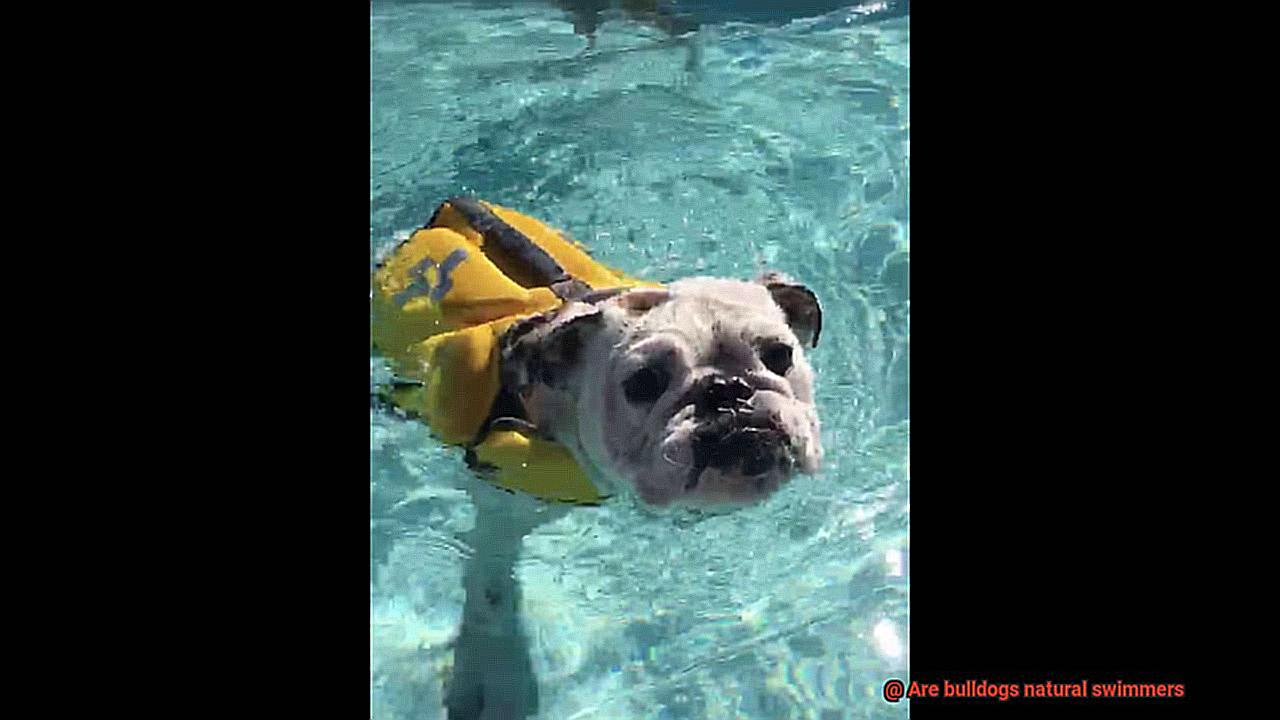
Regular sessions with a professional can help build your bulldog’s confidence in the water. By gradually introducing them to swimming and providing positive reinforcement, your bulldog will become more comfortable and relaxed during water activities. This newfound confidence will enhance their overall swimming experience.
Preventing Common Problems
Professional guidance can help prevent common swimming-related problems in bulldogs, such as ear infections or skin irritations. They can provide essential tips on proper grooming and care after swimming sessions, ensuring that your bulldog’s skin and ears stay healthy.
Life Jackets for Bulldogs: Safety First.
When it comes to water activities, bulldogs may not be the first breed that comes to mind. Their short snouts and heavy build make swimming a challenge for them. However, many bulldog owners still want to include their furry friends in water adventures. That’s where life jackets for bulldogs come in.
Why prioritize safety?
Before we dive into the importance of life jackets, let’s understand why safety should be a top priority for bulldog owners when it comes to water activities. Bulldogs’ body structure and heavy build make it difficult for them to stay afloat and breathe properly in water. Swimming can be exhausting and potentially dangerous for them if proper precautions are not taken.
The need for bulldog-specific life jackets
To ensure the safety of your beloved bulldog in the water, using a life jacket specifically designed for them is crucial. These life jackets are specially made to accommodate their unique body shape and needs. They provide buoyancy and support, helping bulldogs stay afloat and maintain their breathing even in challenging situations.
Choosing the right life jacket
When selecting a life jacket for your bulldog, there are a few key factors to consider:
- Size and fit: The life jacket should fit snugly but not too tight, allowing your dog to move comfortably without restricting their movement.
- Handle on the back: Bulldogs have a heavy build, making it challenging to lift them out of the water without assistance. A life jacket with a handle on the back enables you to easily lift your dog out of the water in case of an emergency.
- Material and visibility: Opt for a life jacket made of durable and water-resistant material. Bright colors and reflective strips enhance visibility, making it easier to spot your dog in the water.
Introducing the life jacket
Before taking your bulldog into the water with a life jacket, it is essential to familiarize them with wearing it. Gradually introduce the life jacket during regular walks or playtime, allowing your dog to get used to the sensation and weight. This will help them feel more comfortable and confident when wearing it in the water.
Maintenance and supervision
Regular inspection and maintenance of the life jacket are essential to ensure its functionality. Before each use, check the buckles, straps, and zippers for any signs of wear or damage. Rinse off any saltwater or chlorine after each swim to prevent corrosion or deterioration.
While a life jacket provides an extra layer of safety, it is important to supervise your bulldog closely in the water. Even with a life jacket, they may tire easily or encounter unexpected challenges. Constant monitoring is crucial to ensure their well-being.
Shallow Water and Playtime: A Refreshing Experience for Bulldogs
The sun is shining, the temperature is rising, and it’s time to have some fun in the water. But what about our beloved Bulldogs? Can they join in on the aquatic adventures? As an expert in all things Bulldogs, I’m here to tell you that shallow water can provide a refreshing and enjoyable experience for these adorable pooches.
Now, Bulldogs are not known for their swimming prowess. With their heavy bodies and short legs, they aren’t exactly built for the water. But fear not. Shallow water can be a safer option for our furry friends to cool off and have a splash-tastic time. Whether it’s a shallow pool, a kiddie pool, or even a shallow area of a lake or beach, Bulldogs can still get their paws wet without the risks associated with deeper water.
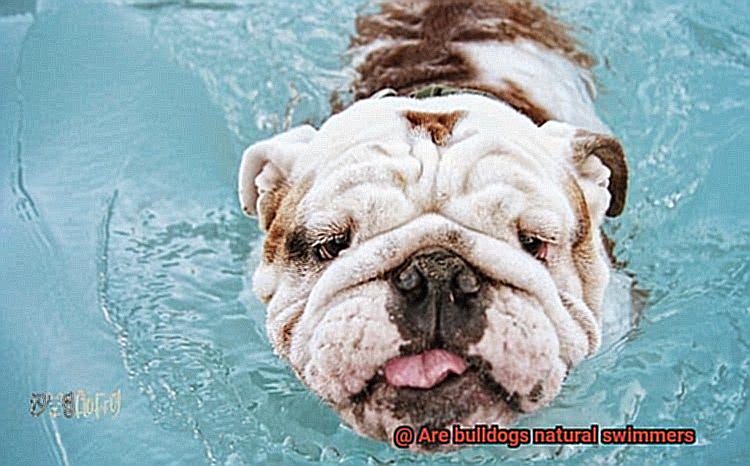
Of course, introducing your Bulldog to shallow water should be done gradually and with caution. Some Bulldogs may be hesitant or even fearful of the water at first. So, take it slow and make the experience positive and rewarding for them. Treats and praise go a long way in building their confidence in the water.
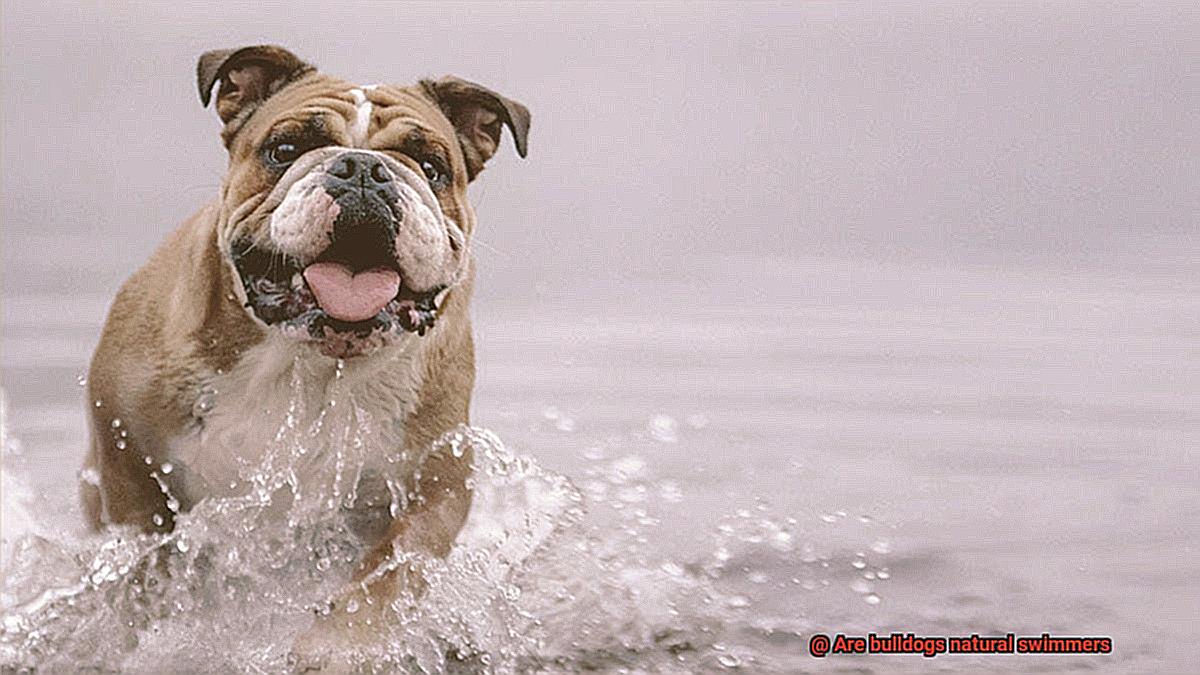
Supervision is key when it comes to Bulldog water play. Even though the risks are lower in shallow water, accidents can still happen. So keep an eye on your furry friend at all times and ensure their safety. And speaking of safety, consider outfitting your Bulldog with a life jacket designed specifically for their unique body shape and needs. This will provide added buoyancy and ensure their safety if they accidentally venture into deeper water.
After a refreshing dip in shallow water, don’t forget to rinse off your Bulldog. Chlorine from pools or saltwater from the ocean can irritate their sensitive skin if left on for too long. Use fresh water to rinse them off thoroughly and dry them properly afterward.
Now, it’s important to note that not all Bulldogs are meant to be swimmers. If your Bulldog shows signs of anxiety or discomfort around water, it’s best to respect their boundaries and not force them into any water activities. Their safety and well-being should always come first.
In conclusion, shallow water can provide a refreshing and enjoyable experience for Bulldogs during playtime. It allows them to cool off, have fun, and engage in water activities without the risks associated with deep water. Just remember to introduce them to water gradually, supervise them closely, and respect their individual comfort levels. So grab those water toys and get ready for some wet and wild Bulldog fun.
Is it Possible to Teach an Old Dog New Tricks?
Absolutely.
As a proud owner of a French Bulldog, you may have heard the saying, “You can’t teach an old dog new tricks.” But is this really true? Can older dogs, like our beloved Frenchies, learn new behaviors and tricks? The answer is a resounding yes. So let’s dive in and explore why it is possible to teach an old dog new tricks.
- Dogs are highly trainable animals: French Bulldogs, like other dogs, have a remarkable capacity for learning. They are intelligent and eager to please their owners, which makes them highly trainable.
- Tailor training to individual needs: Just like humans, older dogs may have physical limitations or cognitive changes that can affect their ability to learn new behaviors. It’s important to adjust our training methods and techniques to suit their individual needs and abilities.
- Positive reinforcement is key: Positive reinforcement techniques, such as rewarding desired behaviors with treats or praise, can be incredibly effective in training older dogs. This helps them associate the new behavior with something positive, making them more likely to repeat it.
- Patience and consistency: Older dogs may take longer to grasp and retain new information. Patience and consistency are crucial when working with them. Take your time and be consistent in your training efforts. Remember, slow and steady wins the race.
- Break it down: Breaking down the desired behavior into smaller, achievable steps can make the learning process easier for older dogs. By taking small steps, you’ll build their confidence and set them up for success.
- Seek professional help if needed: If you’re struggling to teach your old Frenchie a new trick, don’t hesitate to seek professional help from a qualified dog trainer or behaviorist. They can provide expert guidance tailored to your dog’s specific needs.
So, don’t let the saying discourage you. With patience, consistency, and the right approach, you can definitely teach your old Frenchie new tricks. After all, age is just a number, and our furry friends are always capable of learning and growing. So go ahead and have fun training your older French Bulldog – the possibilities are endless.
Alternatives to Deep-Water Swimming for Bulldogs
Bulldogs have unique anatomy that makes deep-water swimming challenging for them. But don’t worry, there are plenty of alternatives that can keep your bulldog cool and entertained without compromising their safety. In this article, we’ll explore some exciting options that will make water playtime a blast for your bulldog.
Shallow Water Activities:
Bulldogs can still have a splashing good time in shallow water. Wading or playing in shallow pools, lakes, or even at the beach allows them to cool off and have fun without the risk of drowning or struggling to breathe.
Doggie Life Jacket:
Investing in a doggie life jacket is a smart move for bulldog owners. These specially designed flotation devices provide buoyancy and support, keeping your bulldog’s head above water and making it easier for them to breathe. Just remember to choose a life jacket that fits properly and provides adequate support for your bulldog’s body size.
Hydrotherapy:
Hydrotherapy is an excellent option for bulldogs who need low-impact exercise or rehabilitation. This therapy involves controlled exercises in a specially designed pool or underwater treadmill. It helps improve muscle strength, joint mobility, and overall fitness without the risks associated with deep-water swimming.
Interactive Water Toys:
Who says bulldogs can’t enjoy water play without swimming? Interactive water toys are perfect for keeping your bulldog entertained and mentally stimulated. These toys can be used in shallow pools or even in your backyard with a sprinkler system. Watch as your bulldog happily chases and splashes around.
Dog Ramps or Stairs:
If you live near a dog-friendly beach or lake, consider using a dog ramp or stairs to provide easy access in and out of the water for your bulldog. This way, they can enjoy some water play without having to swim in deep waters. It’s a win-win solution that keeps them safe and satisfied.
Supervision:
No matter what water activity you choose, always supervise your bulldog. Accidents can happen, even in shallow water. By keeping a close eye on your furry friend, you can ensure their safety and intervene if necessary.
Conclusion
In conclusion, it is clear that bulldogs are not natural swimmers.
Their unique body structure, with a heavy head and short legs, hinders their ability to navigate the water effortlessly. While some bulldogs may enjoy splashing around in shallow pools or calm waters under close supervision, they should never be left unattended near large bodies of water.
It is important for bulldog owners to prioritize their safety by providing life jackets and ensuring a secure environment when introducing them to aquatic activities.
